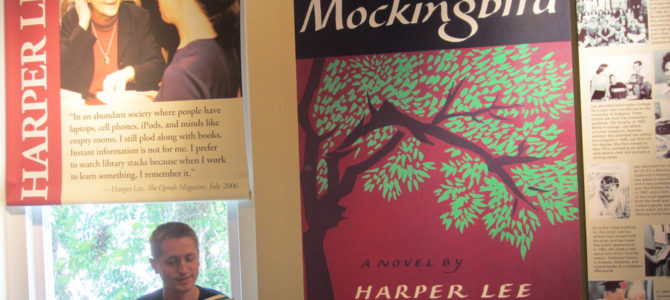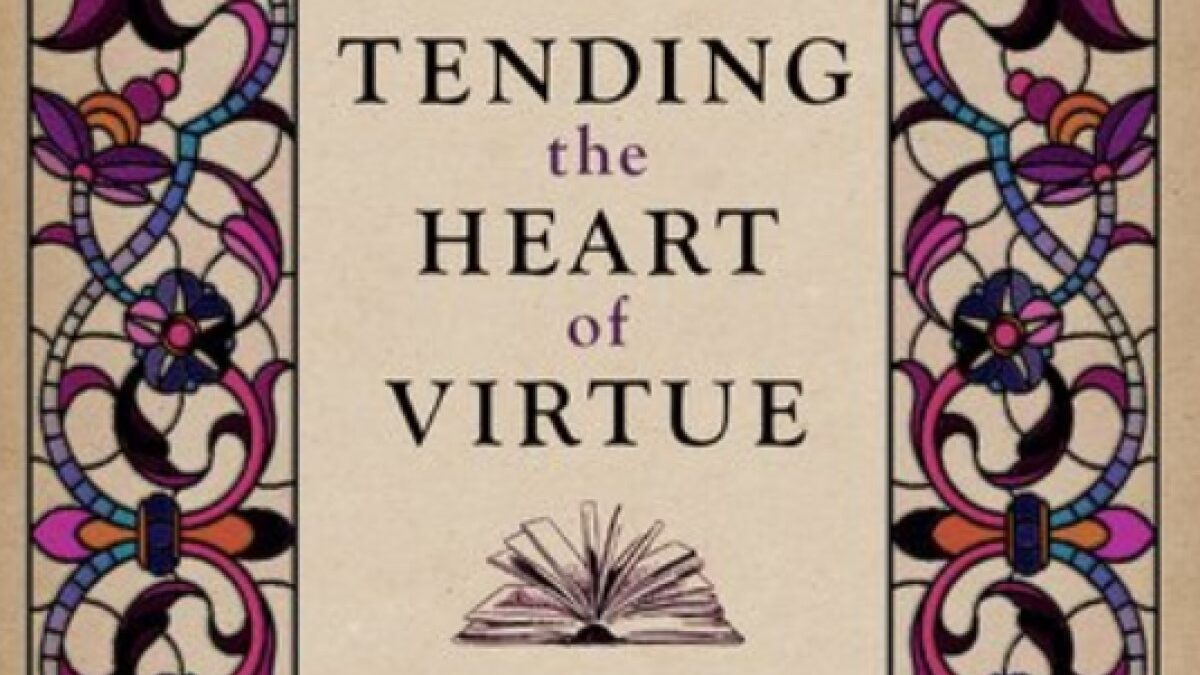
Sometimes the movie really is better than the book. As a high school English teacher, I’m not supposed to say that. But I have recommended to a few shocked casual acquaintances that they forego reading “To Kill A Mockingbird” and watch the film, which is superior not just for Gregory Peck’s iconic performance, but also for the streamlined narrative. Where the novel meanders, the film stays the course.
But a recent critique of the book by novelist Alice Randall has converted me into a full-throttled defender of Harper Lee’s coming of age tale. Randall, it seems, is not interested in telling the truth about the novel or the reasons we should read literature. Her feeble attempt to warn us of the negative messages waiting to marginalize our multicultural student body reveals the novel’s true depth of meaning and convinces me of its rightful place in our curriculum.
Randall’s editorial comes in response to a Mississippi school district’s decision to remove the novel from its curriculum due to the novel’s uncomfortable language. To her credit, Randall rejects the notion that any book should be banned simply because it makes someone uncomfortable. But she then offers her own reasons for removing the book from school curriculum. She argues the novel is “often read by children in wildly different — and sometimes profoundly damaging — ways.”
This Book Doesn’t Say What You Think It Says
Randall never offers any evidence of students ever sharing her proposed wild misinterpretations, and I imagine she never will. I have to wonder if she has ever read the novel or met a teenager. The novel, for those who have yet to read it, tells the story of a young girl, Scout, whose innocent childhood fascination with her spooky neighbor comes to an end when her father, Atticus Finch, defends an innocent black man accused of rape by the Ewells, an unsavory white family esteemed above the impoverished blacks simply because of their skin color. The ensuing outrage and controversy over the trial consumes the Finch family and their small Southern town.
After reading this novel, who would ever conclude that it teaches “should you be raped … people will have reason to doubt you like the book says everyone should have doubted Mayella Ewell.” Randall proposes an “impoverished, white eighth-grade girl” asked to read the novel might come to this conclusion. To be sure, the townspeople in Maycomb don’t believe Mayella, but they don’t believe her precisely because they shouldn’t: She lied. If Mayella had in fact been raped we would have an entirely different novel to consider. Surely Randall isn’t suggesting we teach our young to believe lies and disbelieve truth.
But Randall insists that “the text encourages boys and girls to believe women lie about being raped.” For those who don’t spend much time with teenagers, it is easy to forget the shaky reasoning abilities appropriate to their psychological development. But it would take a truly exceptional child to deduce that all women lie about rape from the premise that one woman lied about rape in a book he once read in school. It wouldn’t be necessary to introduce David Hume’s problem of induction for blooming young minds to avoid this misinterpretation. Common sense will suffice.
Calpurnia Is Far More to the Finches Than ‘Help’
If we’re not convinced that the novel will damage the impoverished white girls in our classrooms, we should remove it for the sake of the black girls. Randall asks us to “think of Calpurnia, the older black maid…[S]he isn’t developed as a character as much as written as a set piece, suggesting the worst to young readers about the role of black women and black female intelligence.”
A responsible reader will see that while Calpurnia is indeed the “help,” she is also the respected mother figure to Scout. By no means is her intelligence demeaned. In fact, she teaches Scout how to write, which puts her leagues above her classmates her first day of school. Nor is Calpurnia a mere set piece. She is important to the novel for demonstrating that meaningful relationships are possible across racial and socioeconomic lines. This isn’t damaging to marginalized students as much as to certain political ideologies
Then perhaps we must consider black boys forced to read the novel. Randall suggests the novel might reinforce their “growing suspicion that [they] are unlikely to get a fair trial should [they] stand accused of something like Tom Robinson.” But perhaps there is reason to believe this. If our justice system is racially biased, should we shield our students from that fact, or inspire them to work towards improving our institutions? If it’s not, or at least not as bad as it was in the Jim Crow South, wouldn’t reading the novel also inspire them to continue the fight for justice and remind them of our past victories?
Randall also covers familiar territory when considering black students in general by observing that “the black child who has been verbally abused by being called a ‘n-gger’ in the schoolyard could be more hurt hearing that word taught in the classroom.” Undoubtedly, any teacher assigning the book must approach with sensitivity, and in my experience every teacher does. But no teacher “teaches” the word, as Randall suggests. “N-gger” is out there, and no one hears it for the first time in the classroom. Walking through the campus of any high school will verify this fact.
But when students encounter the word in “To Kill a Mockingbird” they see it spoken by characters who repulse them. A black student will see that those who use the word do so out of their own insecurity. They are bullies, and like all bullies they are pitiable and pathetic. Their baseness is made clear to the reader. Wouldn’t this empower our black students? The next time someone calls them a “n-gger” they’ll know that the word reveals something ugly only in the one saying it. It has no bearing on their own dignity and worth.
We Can Share Common Humanity Across Race and Money
Randall’s potential misinterpretations rest on an assumption she never justifies: that a reader will only identify with characters who share their racial and socio-economic background. “[T]he book cannot continue to be taught,” she argues, “as if every person in the classroom is white, upper middle class.”
Of course every person in (most) of our classrooms isn’t white, upper middle class, so of course we’re not all blindly teaching it as if they were. But even the white, upper class of the Jim Crow South is not the white, upper class of anywhere today. There is a distance between the characters in the novel and any contemporary reader, as there is a distance between characters in all novels and their readers. Responsible teachers provide the necessary context for entering into the world of the novels they teach.
So the disconnect is no argument for removing the text from the curriculum. If it were, we should also remove “The Diary of Anne Frank” if our male students can’t identify with a Jewish girl; and “Hamlet” if American girls can’t identify with a brooding Danish man-boy; and “Black Boy” if our non-black students can’t relate to the discrimination Richard Wright faced. According to Randall’s logic, any book stands in danger of marginalizing students. She would be surprised to know that an Indian student first told me the novel was banned in Mississippi. With no Indians in the novel, how could she possibly have remembered it?
But Randall insists that “Every student who reads Lee’s book does not identify with Atticus or with Scout.” Sadly, Randall seems to have forgotten the joy and importance of reading literature. In entering the world of characters different from ourselves, we learn that our shared humanity is stronger than our differences.
As a white American who grew up in a conservative Christian home, I identified with the Senegalese Muslim Sambo Diallo in Cheikh Hamidou Kane’s “Ambiguous Adventure.” I read this novel when, like Diallo, I attended a secular university and had to wrestle with my religious beliefs when confronted with secular, Enlightenment philosophy.
Like Diallo, I often didn’t feel at home in either my place of worship or in the halls of my university. Surprisingly, I did not identify with the white French administrators in the novel. Likewise, Malcolm X would be horrified to know that I identify with him when I read his autobiography and not the handful of “white devils” he uses as mere set pieces. Malcolm’s yearning to overcome his surroundings, his painful search for a transcendent truth, his ecstasy of worship and agony of apostasy—these are all elements of a full and captivating human life, not exclusive to the life of a black man. Despite his toxic political ideologies, I empathize with his human search for truth.
It is precisely the search for transcendent truth that unites us and shatters any boundaries our history, identity, or politics draw around us. So we return to Maycomb, Alabama, where a musty courtroom remains divided: whites in the jury and the plaintiff’s seat, blacks in the balcony and the defendant’s seat. In the face of racial animus and unfettered cynicism, Atticus Finch, the man from Attica, echoing those other men from Attica, exhorts us to live according to truth, not to our own interests or those of our tribe.
I cannot think of a more important and timely message for our students.









